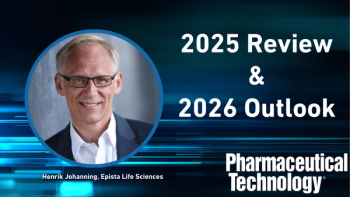
- Pharmaceutical Technology-11-02-2009
- Volume 33
- Issue 11
Are We Abandoning IQ and OQ?
New standards may overlook critical qualification needs.
This article compares the pertinent aspects of the US Food and Drug Administration's 2009 draft guidance for industry on process validation (1) and the 2007 ASTM E2500-7 standard guide on the specification, design, and verification of pharmaceutical and biopharmaceutical manufacturing systems and equipment (2). There are several inconsistencies between the two documents in terms of terminology and expectations for equipment and system qualification. In addition, the timing of both documents gives the impression that previously understood qualification documentation practices are being abandoned for newer terminology and proposed practices.
During the past few years, there seems to have been a directed effort to eliminate the concept of and need for installation qualification (IQ) and operational qualification (OQ). Industry developed these techniques to address FDA's validation requirement. The purpose of IQ and OQ was to verify that equipment and systems were able to perform as intended.
Today, many companies still follow the premise of IQ and OQ, but the introduction of other terms has downsized the importance of these activities. In particular, the term commissioning has been introduced into industry's vernacular to define traditional IQ and OQ tests, among other tests. Today, IQ and OQ have been reduced to lists indicating that commissioning tests have been properly completed and leveraged.
The present situation
With the introduction of the ASTM standard and FDA draft guidance, industry needs to adjust its understanding of the word qualification for systems and equipment once again. For example, both documents deemphasize IQ and OQ. The ASTM standard does not mention the word qualification and the draft guidance does not specifically mention the terms IQ or OQ in its discussions on equipment and system qualification. (The draft guidance does call for performance and process qualification [PQ] as part of overall process validation.)
It can be argued that the two documents address two different but related subjects within the scope of validation. The ASTM standard, for example, is geared toward the acceptance of equipment and systems before performance qualification, and the FDA draft guidance emphasizes PQ.
Role of quality assurance
Traditionally, quality assurance (QA) was carried out by an independent reviewer and approver. The QA department had no direct role in the design or manufacturing process of the drug product and had an independent reporting structure from engineering and manufacturing. With the onset of commissioning, the role of QA in the overall qualification scheme came into question. Nowhere in industry guidelines was it stated that QA should review and approve commissioning tests or related documentation. QA review was strictly for critical systems and equipment.
The FDA draft guidance on process validation gives more responsibility to the quality unit (QU) than does the ASTM standard. The QU is supposed to approve the qualification plan as well as PQ protocols and reports. The FDA draft guidance document notes that the QU should approve individual equipment and system qualifications, as well as the qualification plan and summarizing report.
The ASTM standard does not formally mention the QU other than suggesting that the QU approve the verification plan and verification review documents, and decide on vendor documents as they apply to criticality. The QU does not participate in the review or approval of the verification documents but only the final review documents.
In addition, the QA group has typically been responsible for ensuring that vendors and suppliers are up to date and compliant with current good manufacturing practice (CGMP). The ASTM standard does not give this responsibility to QA but FDA, in other documentation, does give QA the responsibility for overall vendor certification.
FDA
What is more intriguing is that, based on industry committee meetings involving regulatory bodies, FDA and even the European Union agree with the concepts of commissioning and the deemphasis of IQ and OQ. FDA not only participated in the drafting of the documents, but also tacitly approved them. As a result, most of industry instituted the new methodologies.
Even though FDA has not abandoned the concept of qualification, the agency states in the draft guidance that verification is to be achieved through qualification. In the ASTM standard, the word qualification is replaced by verification. It seems that verification, however, is one step removed from qualification; these words are not necessarily interchangeable.
Final thoughts
Over the years, the practice of validation has been truncated, revised, and reinvented. The old standbys of IQ, OQ, and PQ have been criticized by some as not being in step with current technology and practice. Many in industry argued that most people understood GXP, including GEP. Although the industry may have matured in this sense, human nature may not have. Quality problems and recalls still occur.
FDA has not entirely abandoned the concept of qualification as pointed out in its draft guidance on process validation. But relying solely on verification processes and eliminating the role of QA and QUs is not enough to ensure quality. The current situation is further complicated by the variety of unharmonized approaches and standards throughout the global industry. Even within existing regulations, there is inconsistency of meaning and implementation.
Some potential solutions include:
- Involving QA from the onset to participate in the review and acceptance of vendor documentation and the commissioning and verification of related documentation.
- Commissioning and verification testing for every applicable system. Testing should be completed with a QA reviewer and approved in a closeout report
- Above all, requalification and revalidation should take place as needed and when necessary.
Louis A. Angelucci is the director of corporate validation at MedImmune, One MedImmune Way, Gaithersburg, MD 20878, tel. 301.398.2949,
References
1. FDA, Draft Guidance for Industry—Process Validation: General Principles and Practices (Rockville, MD, Nov. 2008).
2. ASTM, Standard E2500-07 Standard Guide for Specification, Design, and Verification of Pharmaceutical and Biopharmaceutical Manufacturing Systems and Equipment (West Conshohocke, PA, 2007).
Articles in this issue
about 16 years ago
Sharing Supply-Chain Securityabout 16 years ago
Facing Realityabout 16 years ago
Changes for Better or Worseabout 16 years ago
Position Paper: Are We Abandoning IQ and OQ?about 16 years ago
Safety versus Speed in Drug Developmentabout 16 years ago
Insider Solutions: A New Direction for USP?about 16 years ago
DIY Healthcare Reformabout 16 years ago
Advancing Chiral Chemistry in API Synthesisabout 16 years ago
Whatever Happened to Classical Chemistry?about 16 years ago
A Robust, Automated Karl Fischer Titration SystemNewsletter
Get the essential updates shaping the future of pharma manufacturing and compliance—subscribe today to Pharmaceutical Technology and never miss a breakthrough.




